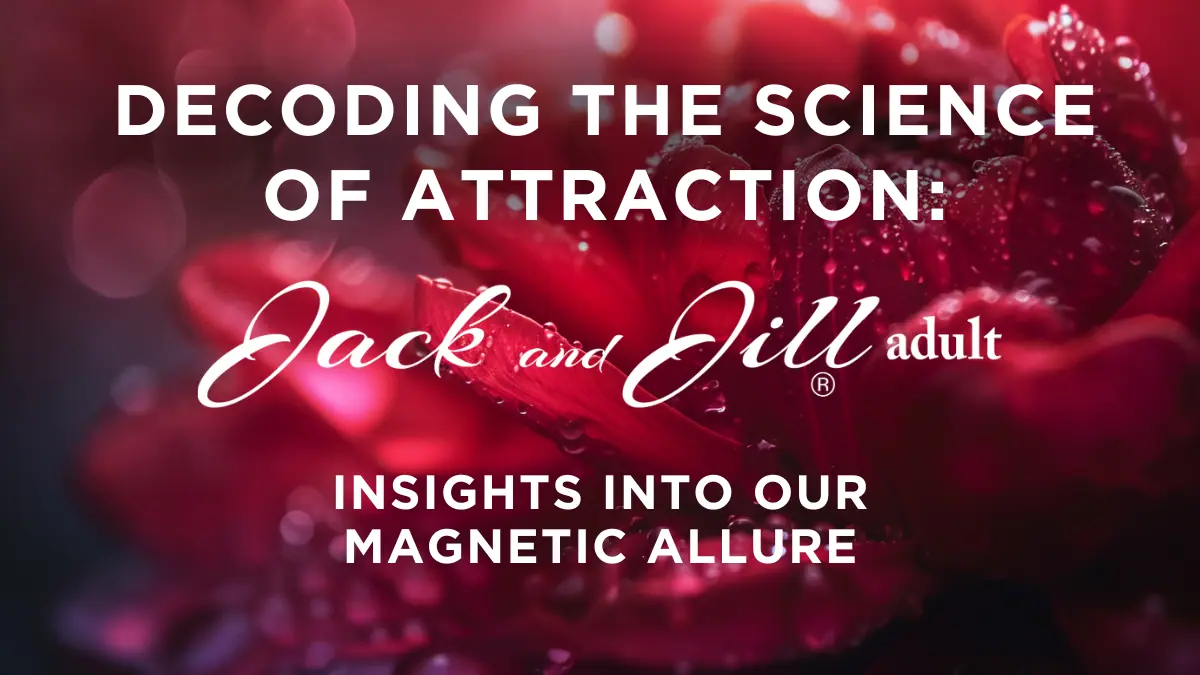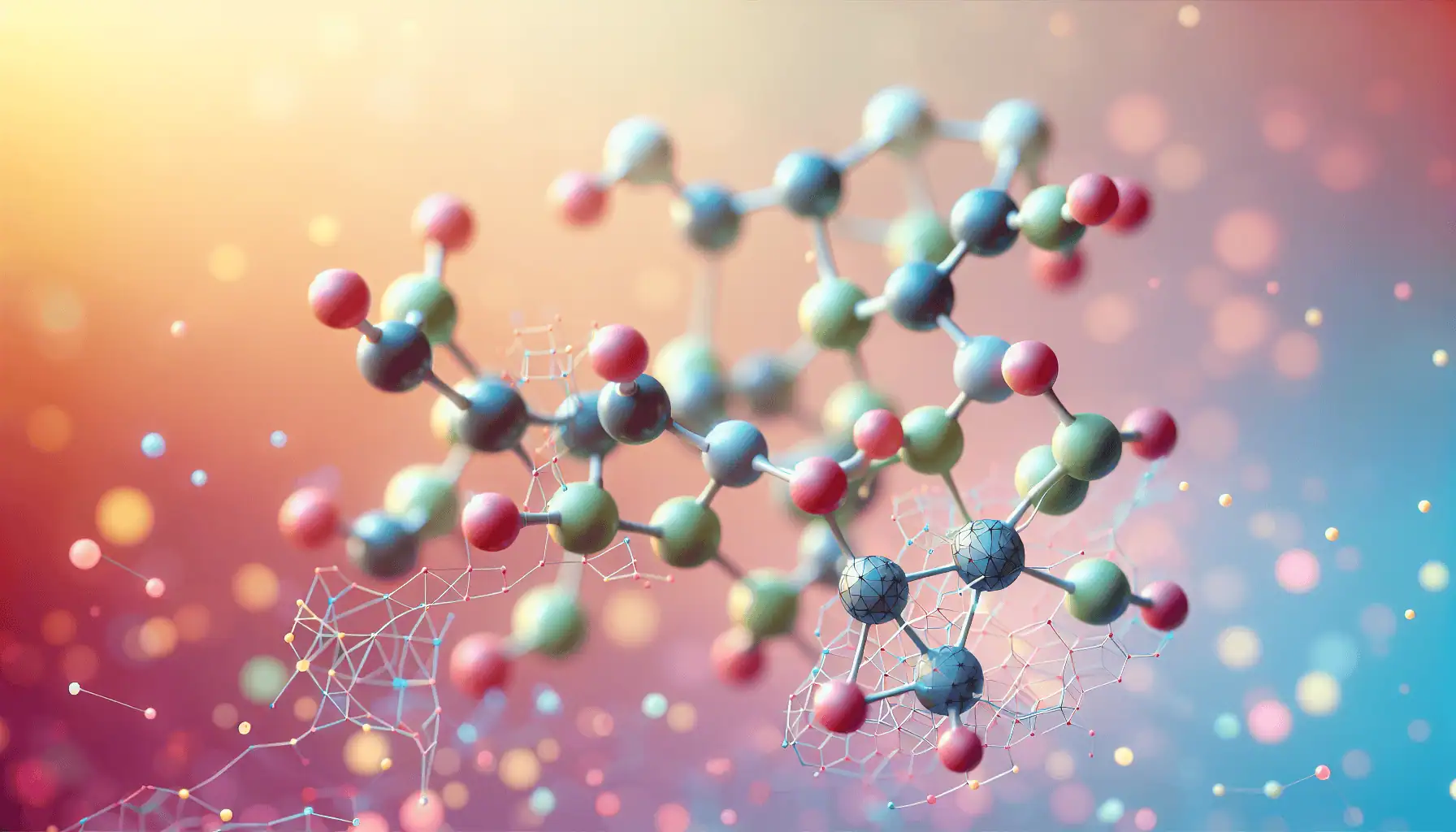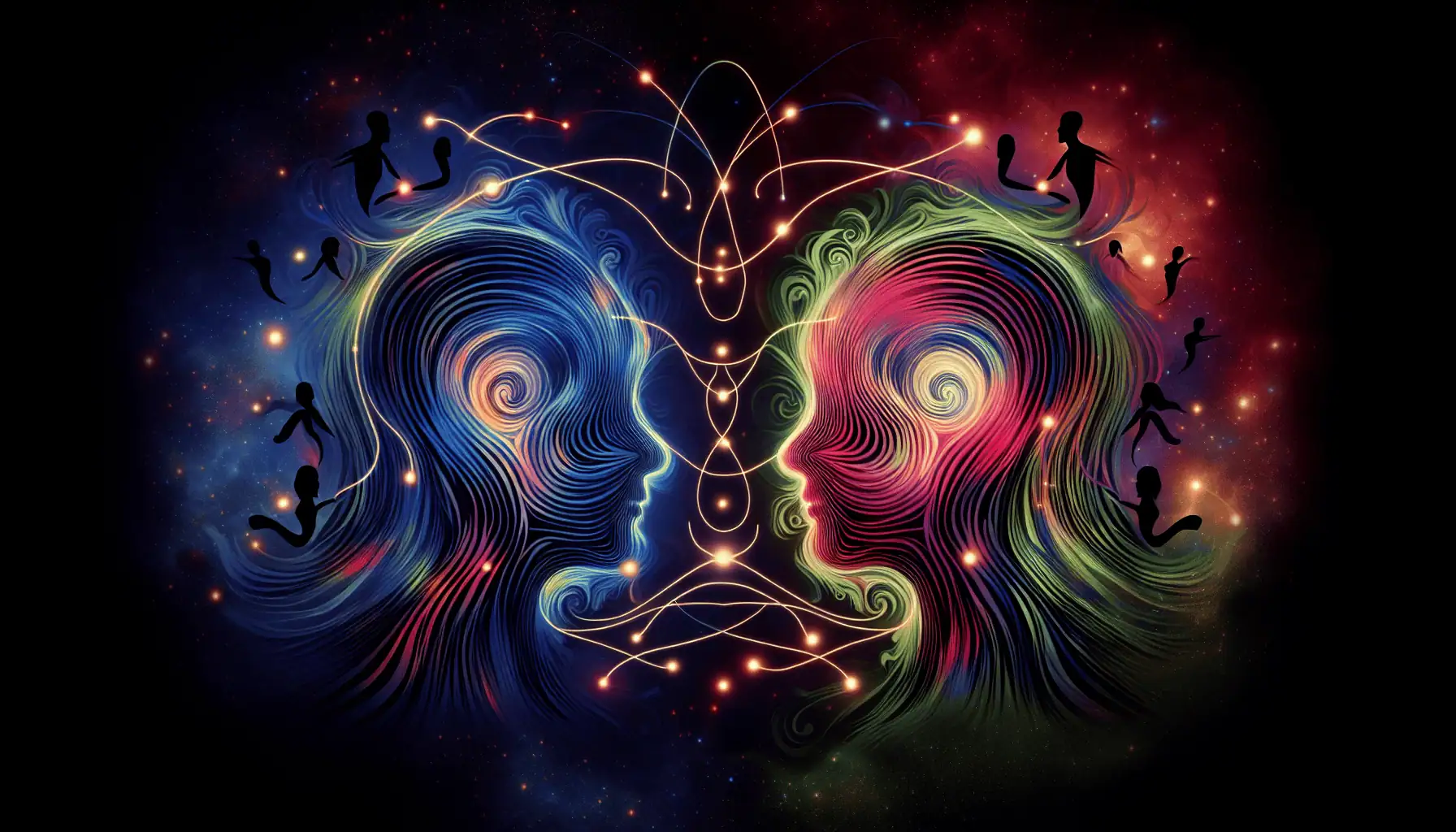
Decoding the Science of Attraction: Insights into Our Magnetic Allure
Ever wondered what fuels the invisible chemistry that draws us to certain people? The science of attraction lies at the heart of this question. This compact guide unpacks the potent mix of hormones, physical features, and subtle social signals that drive our romantic impulses. Expect to uncover the secrets of desire and bonding mechanics, all while preserving the thrill of uncovering what makes someone irresistible.
Key Takeaways
- Attraction is heavily influenced by hormones such as testosterone and oxytocin, which enhance libido and promote bonding, and neurotransmitters like dopamine that amplify the excitement and reward associated with the pursuit of potential partners.
- Physical features like facial symmetry and waist-to-hip ratios play a significant role in initial attraction, with preferences potentially stemming from evolutionary signals of health and fertility.
- Nonverbal communication, especially body language cues like mirroring movements and prolonged eye contact, serve as powerful indicators of attraction by establishing rapport and fostering intimacy.
The Chemistry of Connection: How Hormones Fuel Desire

Underpinning the flutter of attraction is a potent cocktail of hormones, the biological messengers regulating our body functions. These hormones are the conductors of the symphony of sexual attraction, eliciting powerful responses that influence our attraction to potential mates. The dance of desire heavily relies on the interplay of these hormones in our brain and body, which amplify feelings of attraction and fuel our quest for sexual gratification.
Testosterone, a key sex hormone, plays a significant role in influencing sexual desire. It enhances libido in individuals, sparking the flame of desire and contributing to sexual arousal, as well as the sexual aspect of romantic attraction. Hence, our attraction towards others is greatly swayed by the surge of hormones in our bodies, dictating its rhythm and intensity.
The Cuddle Hormone’s Influence
One hormone that stands out in the arena of attraction is oxytocin, fondly dubbed the ‘cuddle hormone’. Synthesized in the hypothalamus and discharged into the bloodstream, oxytocin’s release can be triggered by social interaction, eye contact, and positive emotional experiences, leading to positive feelings. This hormone subtly coaxes us into the arms of attraction, playing an intriguing role in the dance of desire.
Among its myriad influences, oxytocin promotes bonding and attachment in relationships. It is released during touching and hugging, contributing to the establishment of greater interpersonal connection and trust, which can lead to sexual gratification. Hence, this feel-good hormone nurtures the emotional bond between individuals, deepening attraction and strengthening intimacy.
The Thrill of the Chase: Dopamine’s Role
The thrill of the chase, the exhilarating rush of pursuit, is a fundamental facet of attraction. This excitement is deftly orchestrated by dopamine, a neurotransmitter that plays a significant role in driving the pleasure and reward systems in our brains. Dopamine fosters feelings of excitement and gratification that serve as motivation for seeking a romantic partner.
Elevated levels of dopamine contribute to satisfaction, particularly during the early stages of attraction when we find someone appealing. The thrill of pursuit, driven by dopamine, underscores the joy and pleasure associated with the chase in the realm of attraction. It induces a rewarding sense of pleasure, making the journey of love both gratifying and enjoyable.
At First Sight: The Impact of Physical Features on Attraction

Shifting our focus from the inner realm of hormones, let’s step into the visible domain of physical features, which play a large role in the first impressions of attraction. Beauty, it’s often said, lies in the eyes of the beholder. However scientific research suggests that there are certain physical features, like facial symmetry and waist-to-hip ratio, that tend to be universally found attractive, contributing to the concept of female attractiveness.
Despite being subjective, physical attractiveness is influenced by factors like facial symmetry, youthfulness, and body proportions. These physical features contribute to the immediate perception of attraction upon first sight, and they can significantly impact our initial reactions and subsequent interactions with potential mates.
The Allure of Symmetry
When it comes to physical attractiveness, symmetry seems to hold a universal appeal. But why are symmetrical faces considered more attractive? The scientific rationale behind the allure of facial symmetry is rooted in the Evolutionary Advantage Theory. Facial symmetry is linked to good health and genetic fitness, which renders it appealing from an evolutionary perspective.
Due to its association with apparent health and phenotypic condition evaluations, facial symmetry correlates with genetic health. This association suggests that our attraction to symmetrical faces may be more than just a matter of aesthetics; it could be a subconscious signal of a potential mate’s genetic fitness.
The Ideal Figure: Understanding Waist to Hip Ratio
Aside from facial symmetry, another physical feature that significantly impacts attraction is the waist-to-hip ratio (WHR). This ratio pertains to the distribution of fat in the body, which is primarily influenced by sex hormones and contributes to the typical body shape differences between men and women.
An ideal WHR, considered to be around 0.7, signals fertility and overall health. This preference for a specific WHR is believed to offer advantages in terms of health and fertility compared to a high WHR, indicating potential evolutionary benefits. Thus, the allure of a particular figure could be a reflection of our inherent desire to choose a healthy and genetically fit partner.
The Subconscious Signals We Send: Body Language and Attraction
Beyond the realm of physical features lies the fascinating world of nonverbal communication, where the subtle language of the body speaks volumes about attraction. In the context of attraction, body language holds significant importance as it reveals our intentions and interests through nonverbal cues like mirroring actions and genuine smiles.
Eye contact, in particular, holds a significant role in the realm of nonverbal cues. Extended eye contact is pivotal in deepening attraction, eliciting intimacy and vulnerability, and potentially heightening feelings of love and affection. These nonverbal signals, often subconscious and subtle, weave a silent narrative of attraction that speaks louder than words.
Mirroring Movements: A Silent Dance of Attraction
One intriguing facet of nonverbal communication in the context of attraction is the act of mirroring. Mirroring refers to the act of replicating someone’s body language, speech, and other behaviors, a practice commonly observed in interactions with individuals we hold affinity for or find intriguing. This behavioral mimicry, a silent dance of attraction, enhances our emotional connection with others, subtly signaling our interest and attraction.
Mirroring actions establish familiarity and rapport, signaling alignment with the person being mirrored. This can lead to heightened levels of comfort and understanding, creating a sense of similarity, and potentially influencing our subconscious perception of their attractiveness. Thus, the silent dance of mirroring movements can be a powerful tool in the language of attraction.
The Power of Prolonged Eye Contact
The eyes, they say, are the windows to the soul. In the language of attraction, eye contact holds a powerful sway. Prolonged eye contact contributes to fostering intimacy in relationships by:
- Enhancing trust
- Promoting vulnerability and openness
- Conveying emotions
- Establishing a feeling of mutual understanding and closeness
This silent conversation of the eyes can intensify attraction, creating meaningful connections between two individuals.
There exists a significant correlation between prolonged eye contact and attraction, making it a potential indicator of attraction. It contributes to fostering honesty and trust in social interactions, thereby augmenting the appealing nature of the interaction. Thus, the power of prolonged eye contact underscores the beauty of nonverbal communication in the ballet of attraction.
The Scent of Attraction: Pheromones and Their Mysterious Role

Stepping away from the visible cues, let’s delve into the invisible realm of scent, specifically the role of pheromones in attraction. Playing a mysterious role in the dance of attraction, pheromones are chemical messengers that sway our subconscious perception of potential mates.
Androstadienone, present in male sweat, and copulins, found in female vaginal secretions, are two examples of pheromones that can influence heterosexual attraction. These pheromones, silently wafting through the air, can subtly sway our emotions and perceptions, adding another fascinating layer to the complex tapestry of attraction.
Love’s Mental Map: Psychological Elements That Draw Us Together
From the biological and nonverbal cues, let’s transition into the world of the mind. Psychological factors significantly shape our perceptions and influence our choice of mates, thus playing a pivotal role in attraction. Similarity, for instance, contributes to attraction by prompting individuals to be drawn to others who share their attitudes, beliefs, and values.
However, similarity isn’t the sole dictator of attraction. Indeed, disparities or contrasting characteristics can instigate attraction initially, owing to the novelty and thrill they introduce. Thus, the psychological landscape of attraction is a delicate balance of similarity and contrast, a fascinating interplay of familiar and novel elements where attractiveness varies.
Similarity Breeds Attraction
The adage “birds of a feather flock together” holds a seed of truth when it comes to attraction. Psychological theories propose that ‘similarity breeds attraction’ due to individuals’ natural inclination to be drawn to others with just a few examples of shared aspects, such as:
- similar values
- beliefs
- attitudes
- cultural backgrounds
A study conducted by psychologists Ellen Berscheid and Elaine Hatfield in 1969 revealed that participants showed a greater inclination to pursue relationships with individuals who shared similar attitudes. This study demonstrated that shared attitudes have a significant impact on attraction, especially when the attitudes in question are deemed important, thus providing support for the ‘similarity breeds attraction’ theory.
The Attraction of Opposites: When Differences Ignite Passion
While similarity holds a strong sway in attraction, it’s often the spark of differences that ignite passion. It’s the allure of the unfamiliar, the thrill of the new that adds a dash of spice to the mix of attraction. Opposite traits contribute to a dynamic balance in relationships as each partner provides attributes that the other may lack, thereby adding excitement and potentially enhancing the sense of completeness in the relationship.
Complementary personality traits, where the strengths of one person balance out the weaknesses of the other, play a crucial role in enabling partners to amplify each other’s strengths and provide support for weaknesses. Thus, the attraction of opposites can create a vibrant, dynamic balance in relationships, igniting passion and creating a harmonious union.
The Social Context of Attraction: Cultural and Societal Influences
Our perceptions of attractiveness and our choice of romantic partners aren’t solely driven by biological and psychological factors. They’re also shaped by a larger social context, including cultural and societal influences. Some cultural factors that influence our perceptions of attractiveness and romantic partner selection include:
- Beauty standards
- Cultural norms and values
- Media portrayals of beauty
- Socialization and upbringing
- Peer influence
Understanding these cultural factors can help us better understand and navigate the complexities of attraction and relationships.
Cultural body ideals and resource availability can also influence our preferences for attractiveness. For instance, studies have shown that men experiencing financial dissatisfaction and hunger tend to prefer heavier mates, indicating that temporary emotional states can lead to variations in mate preferences that reflect cultural differences. Thus, the social context of attraction adds another dimension to our understanding of this complex phenomenon.
The Evolutionary Perspective: Selecting Partners to Raise Offspring
As we delve deeper into the enigma of attraction, it’s worth exploring the evolutionary perspective. From an evolutionary perspective, mechanisms of attraction have evolved to aid in selecting suitable partners for raising offspring. The underlying evolutionary rationale for the emotion of lust is rooted in the need to reproduce.
The preferences for potential mates might indicate the trade-off between the significance of good genetic quality and the significance of finding a partner who will commit to a long-term relationship and potentially assist in raising offspring. Thus, from an evolutionary perspective, the dance of attraction is a strategic game of genetic survival.
The Science Behind Speed Dating: What Research Reveals
Speed dating serves as a fascinating research tool for studying attraction, especially during a speed dating event. This unique setting allows researchers to observe and analyze the dynamics of initial impressions and subsequent interactions between potential partners. Our cognitive processes lead us to form quick assessments of attractiveness through rapid judgments made within a few seconds of viewing photos or meeting individuals, as observed in speed dating scenarios.
According to psychological theories, perceived popularity and compatibility during initial impressions act as robust indicators of subsequent romantic pursuit in speed dating events. Thus, the science behind speed dating provides valuable insights into the snap judgments and quick decisions that shape the contours of attraction.
Brain Scans and Romance: What Happens Inside Our Heads?
Peering into the realm of neuroscience provides a glimpse into what happens inside our heads when we experience attraction. Brain scans reveal that attraction activates specific regions such as the hypothalamus, the nucleus accumbens, and the ventral tegmental area, thereby facilitating feelings of romance and attachment.
Various chemicals also play a role in the different stages of romantic love. Here are some of the key chemicals involved:
- Lust is influenced by testosterone and estrogen
- Attraction is fueled by dopamine, norepinephrine, and serotonin
- Attachment is underpinned by oxytocin and vasopressin
Thus, the landscape of attraction is an intricate network of brain regions and chemical reactions that contribute to the feelings of pleasure and well-being we associate with romance.
Summary
Through this exploration, we’ve delved into the captivating world of attraction, examining it from various angles. From the role of hormones like oxytocin and dopamine in fueling desire to the impact of physical features on attraction, the silent language of nonverbal cues, and the influence of psychological and socio-cultural factors, we’ve seen that attraction is a complex interplay of diverse elements.
As we conclude this journey, it’s worth pondering how these insights can enhance our understanding of our own attractions and relationships. By appreciating the nuances of attraction, we can better navigate the labyrinth of love, fostering deeper connections and more fulfilling relationships. After all, the science of attraction is not just about understanding why we’re drawn to others, but also about enriching our relationships and our lives.
Frequently Asked Questions
What makes you attracted to someone scientifically?
Scientists have found that attraction is triggered by a combination of chemicals in the brain, including dopamine, serotonin, and oxytocin. These chemicals can lead to feelings of giddiness, euphoria, and increased attachment when around someone we’re attracted to.
What causes attraction to someone?
Attraction to someone can be caused by a combination of factors such as physical attractiveness, personality traits, shared interests, and cultural norms. Other contributors include proximity, perceived gain, similarities and differences, and disclosure. Hormones, pheromones, and timing also play a role.
What role do hormones play in attraction?
Hormones like oxytocin, dopamine, and testosterone play key roles in attraction by influencing feelings of attachment and reward, enhancing libido, and promoting bonding in relationships. These hormones are crucial in shaping our experiences of attraction.
What are the psychological elements that influence attraction?
Psychological elements such as similarity and complementary differences play a significant role in influencing attraction, as shared traits and values can strengthen attraction, while contrasting characteristics can ignite passion and create a dynamic balance in relationships.

